Catholic Customs
 |
 |
 |
 |
 |
 |
 |
The Belgium Gilles: The Pride of the City
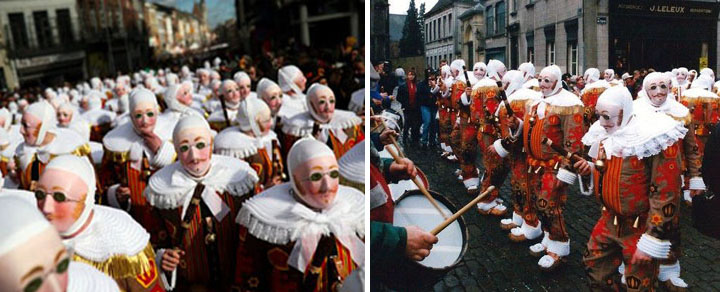
With Carnival season, a wave of colorful costumes and decorations swept across Europe that spread an innocent joy to the hearts of Catholic peoples of the past. Each region and town developed its own way of making merry before the hard penances of Lent. The Carnival costumes and masks, so varied and distinct, reflected a unique aspect of the spirit of each of the different peoples of Europe.
It was seen as a great honor for the men of a village to be chosen to don the distinctive costumes of Carnival. In Binche, home of the most ancient Carnival in Belgium, the coveted bright attire was that of the “Gille.” The Gilles proudly paraded through the streets on Shrove Tuesday, a custom that has been maintained even to this day.
The Carnival in Binche is one of merriment and fun, but it is also a very serious tradition that takes months of preparation and prescribes strict rules of conduct. Its rituals date back centuries and many of the costumes are a century or two of age.
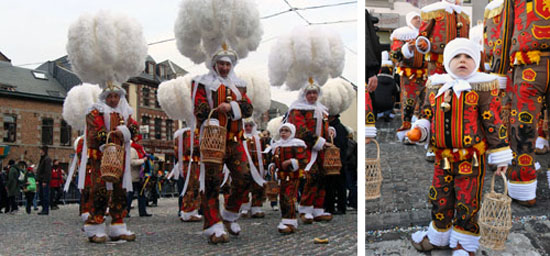
The elaborately collared and cuffed outfits are carefully sewn and adorned weeks before the special day. Rows of lace made by the women of the city trim the outfits with their bright red and yellow stripes down the front. The men stuff straw into the tops to assume a large, intimidating appearance. Bells hang from collars and belts sending their sweet sound through the air as the Gilles walk. The Gilles’ large wooden shoes can be heard through the whole city when they perform their traditional dances.
The Gilles can number up to 1,000 men and boys, including men in their 80s and boys no older than three. Once a man receives the honor of being chosen to enter one of the 10 Gilles confraternities, this position is maintained for life and passed on to sons and grandsons.
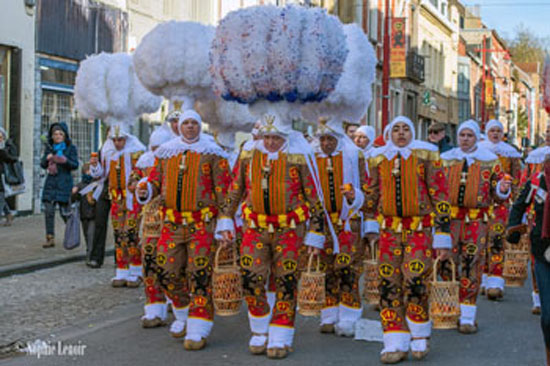
Before the main parade, all of the Gilles march through the streets wearing wax mustachioed masks and waving willow twigs to ward off the evil spirits. They assemble at the City Hall where they are invited inside to assist at a special ceremony where the Mayor bestows a medal to the men who have had the honor of being a Gille for 75 years. The Mayor serves a special breakfast to the Gilles, consisting of champagne and oysters.
Then, to the tunes of traditional airs, the Gilles don their towering ostrich feather plumed hats and march through the streets, throwing oranges to the onlookers. To catch an orange is considered a sign of good luck for the year.
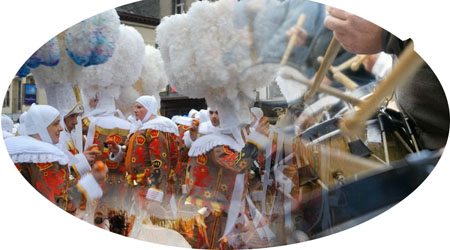
When the Gilles arrive at the town’s Grand Place (main square), they merrily perform their traditional circle dance.
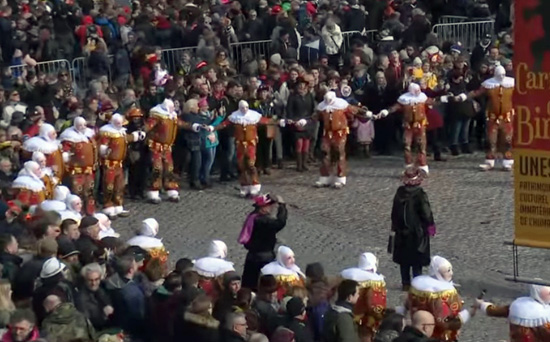
Why do the men of Binche have such pride in their role as Gilles?
According to tradition, the event began in 1549 when Marie of Hungary, the sister of Charles V and regent of the Low Countries, made a grand celebration to welcome Charles’ son, the future Philip II, on his visit to the area. The celebration also commemorated Spain’s recent conquest of Peru under the leadership of Pizarro.
The entertainment included a parade by men dressed in bright costumes, which would later become the distinct Gille costume. These men performed a traditional dance, thought by many to have been a ballet to honor the Conquistadores. The men of Binche considered it a great honor to be chosen to represent the city in an event symbolizing that grand conquest; and so the coveted title of being a Gille of Binche developed.
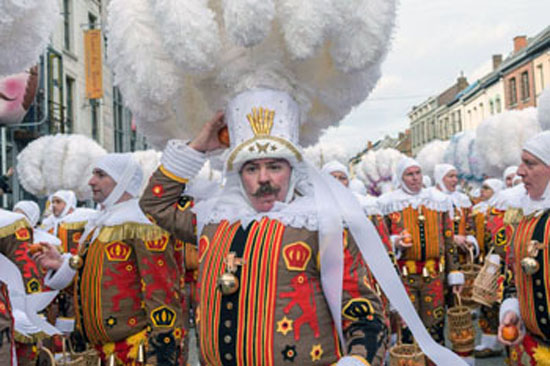
The great Belgian folklorist Albert Mariuus expressed well this pride:
“The honor, the joy, the pride of a city: the Gilles,
“The honor, the joy, the pride of its inhabitants: The Gilles.”

Posted February 15, 2021
______________________
______________________
 |
 |
 |
 |
 |
 |


